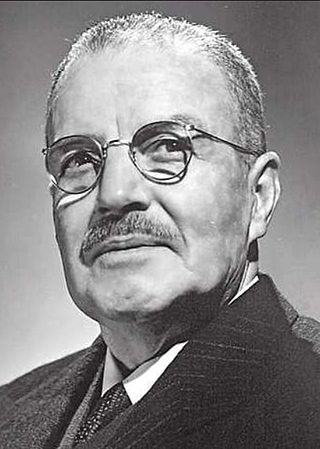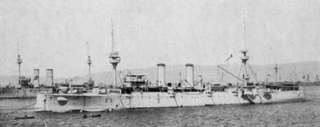
The territory of Chile has been populated since at least 3000 BC. By the 16th century, Spanish conquistadors began to colonize the region of present-day Chile, and the territory was a colony between 1540 and 1818, when it gained independence from Spain. The country's economic development was successively marked by the export of first agricultural produce, then saltpeter and later copper. The wealth of raw materials led to an economic upturn, but also led to dependency, and even wars with neighboring states. Chile was governed during most of its first 150 years of independence by different forms of restricted government, where the electorate was carefully vetted and controlled by an elite.

General Carlos Ibáñez del Campo was a Chilean Army officer and political figure. He served as President twice, first between 1927 and 1931, and then from 1952 to 1958, serving for 10 years in office.

Jorge Eduardo Alessandri Rodríguez was the 26th President of Chile from 1958 to 1964, and was the candidate of the Chilean right in the crucial presidential election of 1970, which he lost to Salvador Allende. He was the son of Arturo Alessandri, who was president from 1920 to 1925 and again from 1932 to 1938.

Arturo Fortunato Alessandri Palma was a Chilean political figure and reformer who served thrice as president of Chile, first from 1920 to 1924, then from March to October 1925, and finally from 1932 to 1938.

Luis Altamirano Talavera was a Chilean military officer, minister, Vice President of the Republic and finally president of the Government Junta of Chile between 1924 and 1925.

Marmaduke Grove Vallejo, was a Chilean Air Force officer, political figure and member of the Government Junta of the Socialist Republic of Chile in 1932.

Division General Juan Pablo Bennett Argandoña was a Chilean military officer and member of the Government Junta that ruled Chile between 1924 and 1925.
Government Junta of Chile, was the political structure established to restore power to President Arturo Alessandri, after he had been deposed in 1924. On January 23, 1925, a military movement of young officers, wrestled power from the previous September Junta. Then they organized a new Junta and recalled president Alessandri back to his post. The Junta lasted until Alessandri's resumption of power.

The Chilean coup d'état of 1925 took place on January 23, 1925, when the Chilean military overthrew the September Junta. Led by Colonel Marmaduque Grove, the troops arrested the Junta's President, General Luis Altamirano, and then handed the power to General Pedro Dartnell as interim President. The organizers of the coup hoped to recall former president Arturo Alessandri Palma, who had been forced into exile after the September Junta's coming to power. However, General Dartnell ultimately refused to rule alone and formed the January Junta a few days later, handing power to Emilio Bello Codesido. Alessandri only returned from exile on March 20, 1925, putting an end to the junta.

In Chilean political history, the ruido de sables was an event on 3 September 1924, when a group of young military officers protested against the political class and the postponement of social measures by rattling the scabbards (chapes) of their sabers against the floor.

The Conservative Party of Chile was one of the principal Chilean political parties since its foundation in 1836 until 1948, when it broke apart. In 1953 it reformed as the United Conservative Party and in 1966 joined with the Liberal Party to form the National Party. The Conservative Party was a right-wing party, originally created to be the clericalist, pro-Catholic Church group.

Government Junta of Chile, was a political structure established during the anarchy that followed the resignation of President Carlos Ibáñez del Campo. It proclaimed the Socialist Republic of Chile. The short-lived state ended with the election of Arturo Alessandri as new president of Chile.

The Socialist Republic of Chile was a short-lived political entity in Chile, that was proclaimed by the Government Junta that took over that year.

The Parliamentary Era in Chile began in 1891, at the end of the Civil War, and spanned until 1925 and the establishment of the 1925 Constitution. Also called "pseudo-parliamentary" period or "Parliamentary Republic", this period was thus named because it established a quasi-parliamentary system based on the interpretation of the 1833 Constitution following the defeat of President José Manuel Balmaceda during the Civil War. As opposed to a "true parliamentary" system, the executive was not subject to the legislative power but checks and balances of executive over the legislature were weakened. The President remained the head of state but its powers and control of the government were reduced. The Parliamentary Republic lasted until the 1925 Constitution drafted by President Arturo Alessandri and his minister José Maza. The new Constitution created a presidential system, which lasted, with several modifications, until the 1973 coup d'état.

The Presidential Republic is the period in the history of Chile spanning from the approval of the 1925 Constitution on 18 September 1925, under the government of Arturo Alessandri Palma, to the fall of the Popular Unity government headed by the President Salvador Allende on 11 September 1973. The period spans the same time as the "Development inwards" period in Chilean economic history.

The Radical Governments of Chile were in power during the Presidential Republic from 1938 to 1952.

The protected cruiser Blanco Encalada was purchased by the Chilean Government for £333,500 during the Argentine–Chilean naval arms race. She was the second ship named Blanco Encalada..
The following lists events that happened during 1924 in Chile.
The following lists events that happened during 1925 in Chile.












